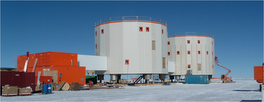Sunday seismometer #6
Vicentini (1895 and 1899)
Let's go back to the early days, and take a look at a contemporary of the Reuber-Paschwitz and Reuber-Ehlert seismographs. The Vicentini instruments are simple, un-damped pendulums, one to record the two horizontal components of motion, and another to record the vertical component.

The clock at the back of the image above is a precision chronometer that was used to produce the time base for the seismic recordings at the Strasbourg Seismic Observatory.
Built in 1895 and 1899 in Padova, Italy, the Vicentini seismographs had low sensitivity and were designed to record strong motion from local earthquakes. Their natural period is 1-2 seconds.

Where the Reuber instruments were lightweight (200 g masses) and used optical recording to reduce friction, the Vicentini instruments had heavy masses (100 kg for the horizontal and 50 kg for the vertical) and used a mechanical recording system. In order for a seismograph to overcome the friction caused by a purely mechanical recording system, it needs a large mass.
We no longer have the Vicentini recording systems. The horizontal system was installed under the pendulum mass and recorded the two components of motion and a time mark on a single sheet of smoked paper.
The two Vicentini seismographs operated in Strasbourg from 1895 to 1907.





